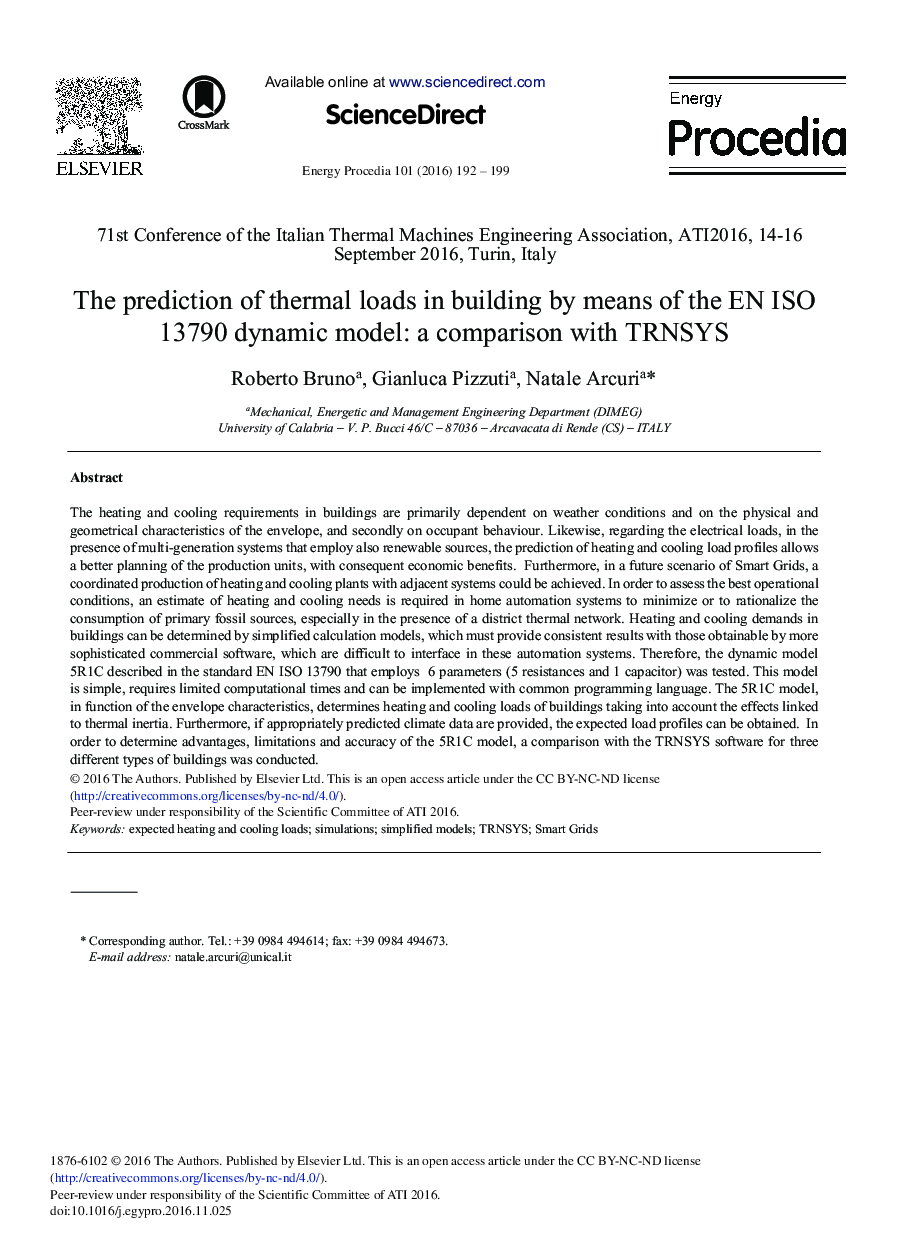| Article ID | Journal | Published Year | Pages | File Type |
|---|---|---|---|---|
| 5446453 | Energy Procedia | 2016 | 8 Pages |
Abstract
The heating and cooling requirements in buildings are primarily dependent on weather conditions and on the physical and geometrical characteristics of the envelope, and secondly on occupant behaviour. Likewise, regarding the electrical loads, in the presence of multi-generation systems that employ also renewable sources, the prediction of heating and cooling load profiles allows a better planning of the production units, with consequent economic benefits. Furthermore, in a future scenario of Smart Grids, a coordinated production of heating and cooling plants with adjacent systems could be achieved. In order to assess the best operational conditions, an estimate of heating and cooling needs is required in home automation systems to minimize or to rationalize the consumption of primary fossil sources, especially in the presence of a district thermal network. Heating and cooling demands in buildings can be determined by simplified calculation models, which must provide consistent results with those obtainable by more sophisticated commercial software, which are difficult to interface in these automation systems. Therefore, the dynamic model 5R1C described in the standard EN ISO 13790 that employs 6 parameters (5 resistances and 1 capacitor) was tested. This model is simple, requires limited computational times and can be implemented with common programming language. The 5R1C model, in function of the envelope characteristics, determines heating and cooling loads of buildings taking into account the effects linked to thermal inertia. Furthermore, if appropriately predicted climate data are provided, the expected load profiles can be obtained. In order to determine advantages, limitations and accuracy of the 5R1C model, a comparison with the TRNSYS software for three different types of buildings was conducted.
Related Topics
Physical Sciences and Engineering
Energy
Energy (General)
Authors
Roberto Bruno, Gianluca Pizzuti, Natale Arcuri,
